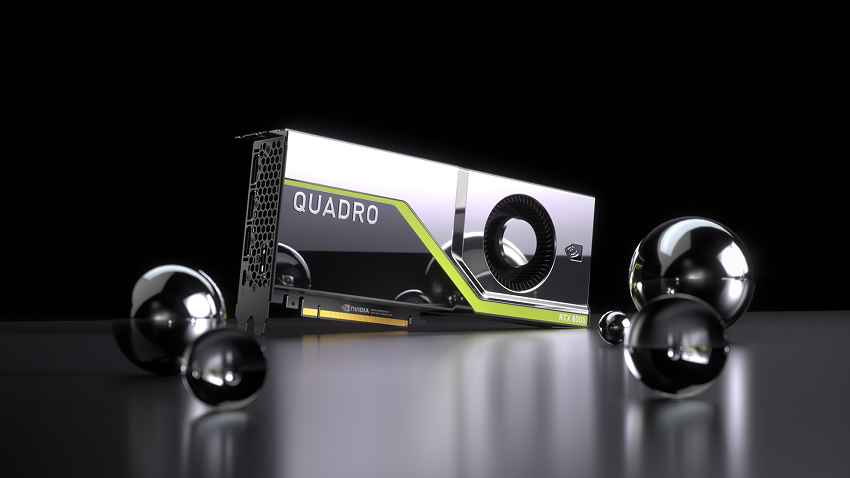Nvidia has been touting Ray Tracing for months now, after the company started pushing hard into development tools for their users that could further leverage the expensive but gorgeous lighting rendering technique. Ray-Tracing is part of the reason why CGI in films looks so great, but requires massive render farms and a lot of time to pull off. The idea of real-time ray-tracing is still new, and partly possible because of Nvidia’s dedication to build hardware to make it happen. And last night a big step was made in that direction, with Nvidia revealing their first Ray-Tracing focused GPU using their brand new Turing architecture.
The Quadro RTX isn’t a gaming card. In fact it’s one of the furthest things Nvidia makes from a consumer card at all, but it’s a massively impressive piece of technology regardless. The cards will cost up to $10 000 at launch, and be primarily marketed to design studios, film studios and game developers seeking to increase their Ray-tracing productivity and achieve something closer to real-time rendering. The biggest RTX 800 does that with a massive 16 teraflops of performance, which is achieved with 4608 CUDA cores and 576 Tensor cores. The card will support up to 48GB of brand new GDDR6 memory for blistering fast transfer speeds too.
The Turing Architecture will support two versions of SLI support, for a lack of a better term. Nvidia is supporting the card with its own NVLink Interface that will let studios link up as many cards together as they like, but they also announced a new standard called VirtualLink. This lets multiple cards to interface together and deliver their processing power to a virtual reality headset through a single USB-C connection. The idea of directing films through VR has already been used in productions such as Ready Player One, so this further opens up the possibilities for real-time CGI direction.
This is all really exciting for the future of big-budget products, but it doesn’t little for you who might be looking for a new GPU to pop into your desktop. With Gamescom happening next week Nvidia is expected to transfer talk over to their new gaming-focused consumer cards, which may feature their own takes on tackling Ray-Tracing. So there’s not long to wait at all.
Last Updated: August 14, 2018






















Kromas
August 14, 2018 at 11:24
But can it Ray Cast Crysis?
Guz
August 14, 2018 at 12:25
Hopefully this can help some of the smaller indie studios fix up their CGI a bit, I mean Ive seen some promising shows only for the horribly rendered CGI monster/effects ruin it
Magoo
August 15, 2018 at 13:23
I mean, if they can fork out and justify $10k.
Kikmi
August 17, 2018 at 12:06
See now the two main questions here are: 1) Will the RTX retain any tensor cores and 2) When will developers start making use of tensor for AI processing and letting that be offloaded from the CPU. I see no reason why complex pathfinding and object identification protocols cant be implemented using the existing tensor technology since thats what the cores were built to do in the first place. I imagine a world with better NPC’s adding a lot more to development and retention of a good narrative and gameplay mechanic. This could totally be done, ^IF^ the consumer industry is exposed to these kinds of technologies sooner rather than later. Tensor should be the next cuda. (I’m not at all that much into RT’ing, games are pretty fucking photorealistic as it stands, we shouldn’t be concerned with overly fluffy pixel puke as much as we should be about expanding the actual experience, but hey thats just me)